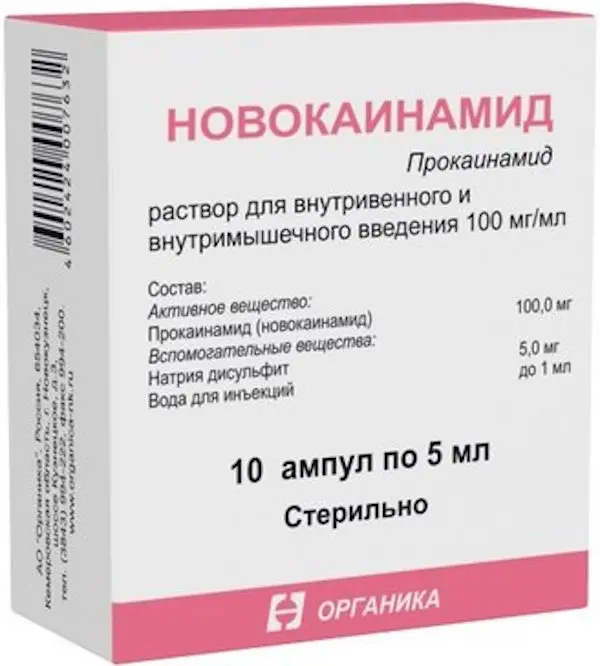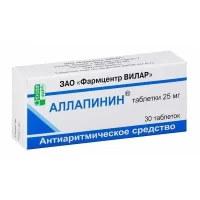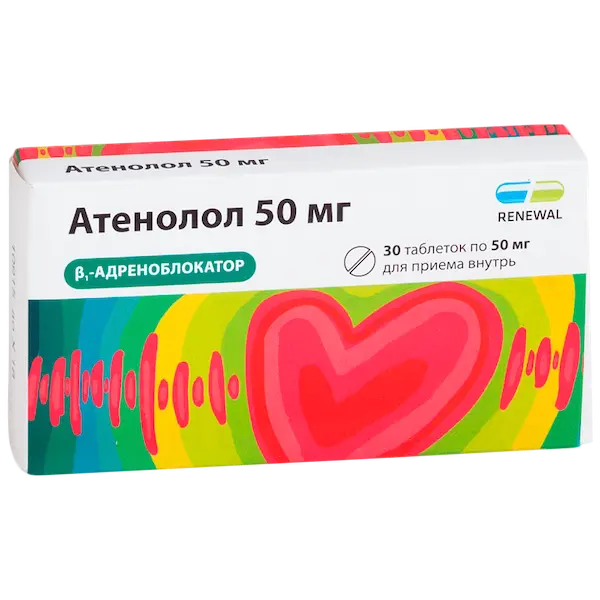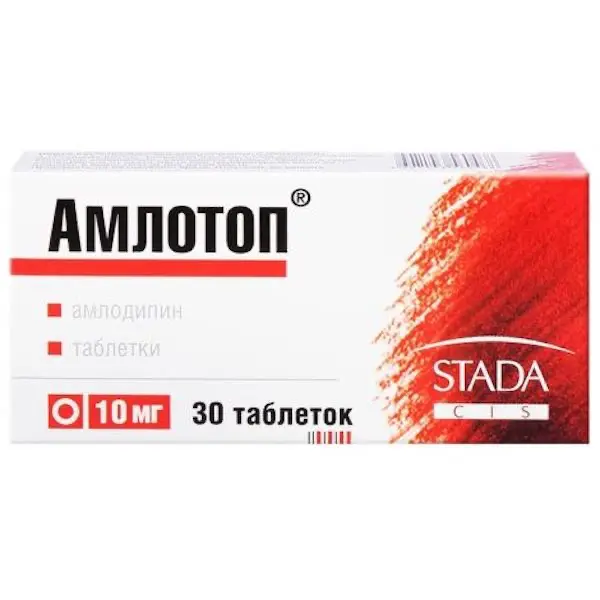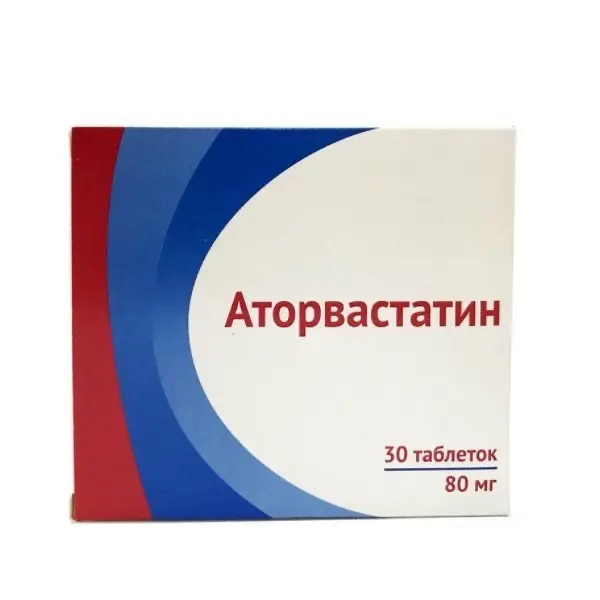Description
Novocainamide Pharmacodynamics
Class IA antiarrhythmic drug, has a membrane stabilizing effect. Inhibits the incoming rapid current of sodium ions, reduces the rate of depolarization in phase 0. Inhibits conduction, slows repolarization. Reduces atrial and ventricular myocardial excitability. Increases the duration of effective refractory period of action potential (in the affected myocardium to a greater extent). Conduction delay, which is observed regardless of the value of resting potential, is more pronounced in the atria and ventricles, less in the atrioventricular (AV) node.
Indirect M-cholinoblocking effect is less pronounced compared to quinidine and disopyramide, so paradoxical improvement of AV conduction is usually not observed.
It affects the phase 4 of depolarization, decreases automatism of intact and affected myocardium, inhibits sinus node function and ectopic pacemakers in some patients. The active metabolite, N-acetylprocainamide (N-APA) has pronounced activity of class III antiarrhythmic drugs, prolongs the duration of action potential.
It has a weak negative inotropic effect (without a significant effect on the minute blood volume). It has vagolytic and vasodilatory properties, which causes tachycardia and reduction of arterial pressure (BP) and total peripheral vascular resistance.
Electrophysiological effects are manifested in the broadening of QRS complex and prolongation of P-Q and Q-T intervals. Time of maximum effect achievement with intravenous injection – immediately, with intramuscular injection – 15-60 min.
Indications
Ventricular rhythm disorders: ventricular tachycardia, ventricular extrasystole.
Atrial tachycardia, atrial fibrillation and/or flutter.
Contraindications .
Hypersensitivity to the components of the drug, ventricular arrhythmias caused by intoxication with cardiac glycosides, class II and III sinoatrial and atrioventricular block (if there is no implanted pacemaker), decompensated chronic heart failure, Arterial hypotension, cardiogenic shock, systemic lupus erythematosus (including anamnesis), breastfeeding period, ventricular pirouette arrhythmias, prolonged QT interval, leukopenia, ventricular flutter or fibrillation, age less than 18 years (efficacy and safety not established).
Caution:
Due to a possible decrease in myocardial contractility and a decrease in BP, the drug should be administered with great caution in myocardial infarction. Arrhythmogenic effect is possible.
Gis bundle leg block, grade I atrioventricular block, myasthenia gravis, bronchial asthma, hepatic and/or renal failure, chronic heart failure, ventricular tachycardia with coronary artery occlusion, surgical interventions (including dental surgery), marked atherosclerosis, advanced age.
Pregnancy and lactation:
Use only when the benefit to the mother outweighs the potential risk to the fetus/infant.
If the drug is administered during pregnancy, there is a potential risk of arterial hypotension in the mother, which may lead to uterine-placental insufficiency.
Dosage and administration
- Intravenously: 100-500 mg at a rate of 25-50 mg/min (under control of BP and electrocardiogram (ECG)) until paroxysm arrest (maximum dose is 1 g) or intravenous drip: 500-600 mg in 25-30 min. The maintenance dose in intravenous drip infusion is 2-6 mg/min; if necessary, start the drug orally 3-4 hours after stopping the infusion.
- In II degree heart failure, the dose is reduced (by 1/3 or more). Intramuscularly 5-10 ml (up to 20-30 ml per day). When administered intravenously the drug is diluted in 5% glucose solution or 0.9% sodium chloride solution. The infusion rate should not exceed 0.05 g/min. At the same time, heart rate should be constantly monitored. Blood pressure and ECG. The maximum dose for adults when administered intramuscularly and intravenously (dropwise): single dose – I g (10 ml of preparation), daily – 3 g (30 ml of preparation). When switching to oral administration, the first dose is administered 3-4 hours after stopping the IV infusion.

